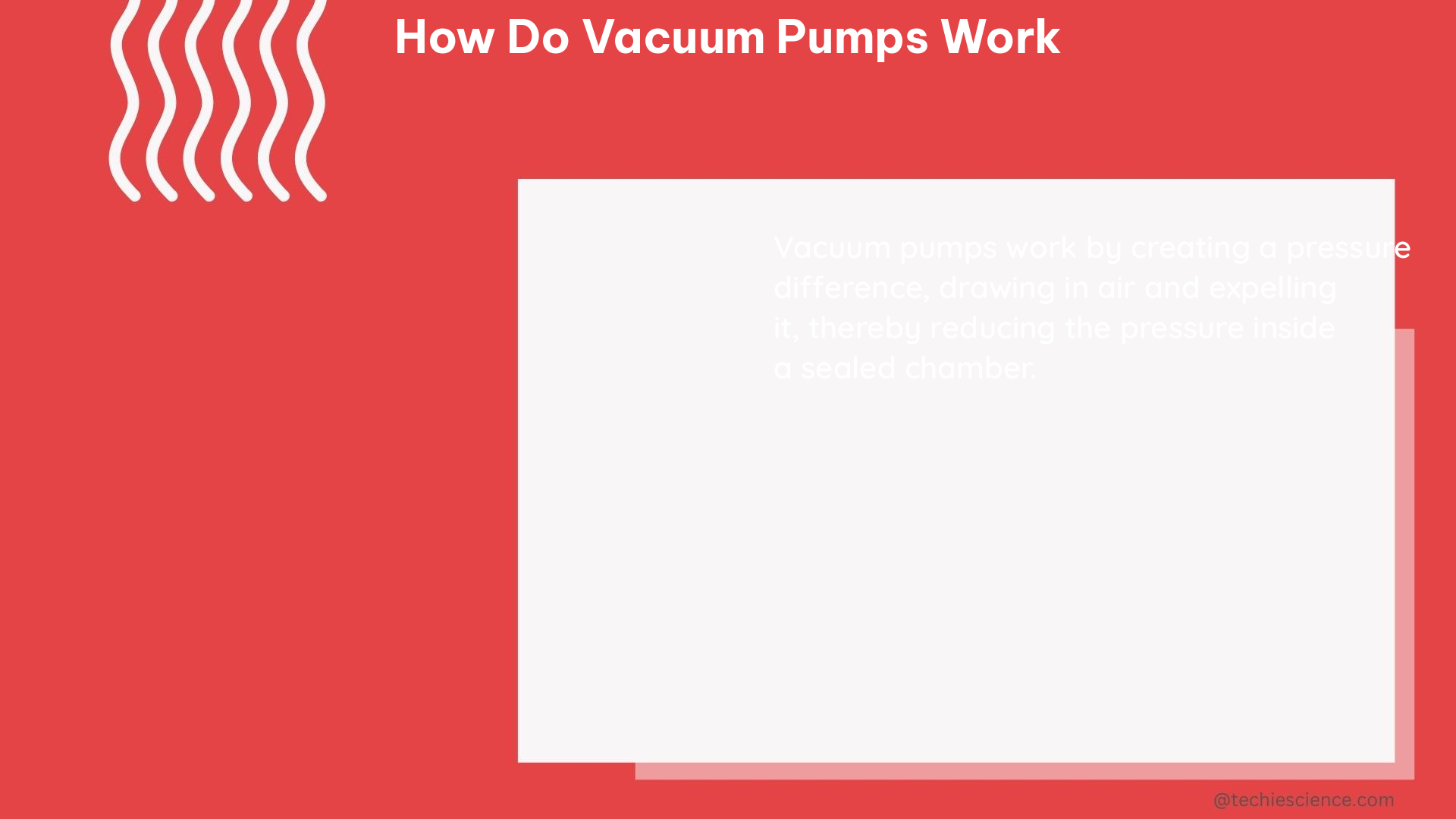Vacuum pumps are essential devices that create a difference in pressure by removing gas molecules or air particles from a sealed volume. These pumps work by manipulating high and low-pressure states to move gas molecules from one region to another, effectively generating a vacuum. The primary function of a vacuum pump is to alter the pressure within a contained space, enabling the creation of a full or partial vacuum through either pulling molecules out or pushing them in.
Types of Vacuum Pumps
There are several types of vacuum pumps, each with its own unique characteristics and applications:
-
Rotary Vane Pumps: These pumps use rotating vanes to create a vacuum by trapping and expelling air from the pump chamber. They are commonly used in rough and low-vacuum pressure ranges.
-
Scroll Pumps: Scroll pumps utilize two spiral-shaped scrolls, one fixed and one orbiting, to create a vacuum by compressing and expelling air. They are efficient in low and medium-pressure ranges.
-
Multistage Roots Pumps: Multistage roots pumps employ a series of rotating lobes to move gas molecules, allowing them to handle a wide range of vacuum pressure levels, from rough to high vacuum.
-
Turbomolecular Pumps: These pumps use a series of high-speed rotating blades to impart momentum to gas molecules, effectively pulling them out of the system and creating a high-vacuum environment.
-
Ion Getter Pumps: Ion getter pumps use a combination of high-voltage ionization and magnetic fields to trap and remove gas molecules, making them suitable for ultra-high vacuum applications.
These vacuum pumps can be further classified into three categories based on the pressure range they can achieve:
-
Primary (Backing) Pumps: These pumps handle rough and low-vacuum pressure ranges, creating a rough vacuum in a system before a secondary pump is introduced.
-
Booster Pumps: Booster pumps operate in low and medium-pressure ranges, and are used to increase the pumping speed of a system.
-
Secondary (High Vacuum) Pumps: These pumps handle high, very high, and ultra-high vacuum pressure ranges, providing the necessary vacuum levels for various applications.
Capture Pumps (Entrapment Pumps)

Capture pumps, also known as entrapment pumps, are a unique type of vacuum pump that have no moving parts. These pumps create a vacuum environment by trapping gas molecules through cryogenics or by using highly magnetic fields and ionization of gas molecules to make them electrically conductive.
Vacuum Pump Operation Principles
Vacuum pumps can operate using two main methods: kinetic energy or positive displacement.
-
Kinetic Energy Pumps: These pumps use the principle of momentum to push gas towards the outlet. This can be achieved through the use of impellers or by introducing vapor to the system.
-
Positive Displacement Pumps: Positive displacement pumps use a mechanical method to move gas and air through the system, effectively creating a vacuum.
Calculating Vacuum Pump Performance
The time required to pump a system down to a certain vacuum level can be approximated using the following formula:
t = (V * n) ÷ 4q
Where:
– t is the time in minutes
– V is the system volume in cubic feet
– n is a constant for the application
– q is the flow capacity in cubic feet per minute (CFM)
The value of n can be determined as follows:
– n = 1 for vacuum to 15 in.-Hg
– n = 2 for vacuum > 15 but ≤ 22.5 in.-Hg
– n = 3 for vacuum ≥ 22.5 and up to 26 in.-Hg
Vacuum Pump Altitude Considerations
Vacuum pumps have maximum vacuum ratings based on sea level conditions. When operating at higher altitudes, these pumps must be re-rated to account for the reduced atmospheric pressure. For every 1,000 feet of altitude above sea level, the atmospheric pressure drops by 1 in.-Hg. Therefore, the maximum vacuum that can be achieved in locations above sea level will be less than 29.92-in.-Hg, limited by the ambient atmospheric pressure.
Conclusion
Vacuum pumps are essential devices that play a crucial role in various industries and applications, from scientific research to manufacturing processes. By understanding the different types of vacuum pumps, their operating principles, and the factors that affect their performance, you can make informed decisions when selecting and using these critical components.
References
- Understanding the Fundamentals of Vacuum Technology, Powermotiontech.com, 2024-02-02.
- Vacuum systems for analytical instruments, Edwardsvacuum.com, en-us/vacuum-pumps/our-markets/vacuum-systems-for-analytical-instruments.
- How do Vacuum Pumps Work? – Anderson Process, Andersonprocess.com, 2021-04-12.
- Vacuum Pump Safety – Lab Manager, Labmanager.com, 2021-04-12.

The lambdageeks.com Core SME Team is a group of experienced subject matter experts from diverse scientific and technical fields including Physics, Chemistry, Technology,Electronics & Electrical Engineering, Automotive, Mechanical Engineering. Our team collaborates to create high-quality, well-researched articles on a wide range of science and technology topics for the lambdageeks.com website.
All Our Senior SME are having more than 7 Years of experience in the respective fields . They are either Working Industry Professionals or assocaited With different Universities. Refer Our Authors Page to get to know About our Core SMEs.